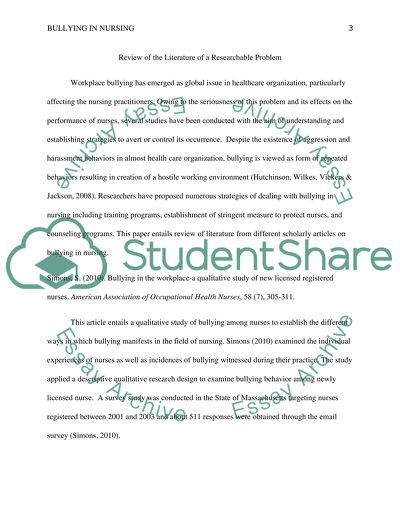Cite this document
(“Bullying in Nursing Research Paper Example | Topics and Well Written Essays - 1750 words”, n.d.)
Retrieved from https://studentshare.org/nursing/1448798-review-of-the-literature-of-a-researchable-problem
Retrieved from https://studentshare.org/nursing/1448798-review-of-the-literature-of-a-researchable-problem
(Bullying in Nursing Research Paper Example | Topics and Well Written Essays - 1750 Words)
https://studentshare.org/nursing/1448798-review-of-the-literature-of-a-researchable-problem.
https://studentshare.org/nursing/1448798-review-of-the-literature-of-a-researchable-problem.
“Bullying in Nursing Research Paper Example | Topics and Well Written Essays - 1750 Words”, n.d. https://studentshare.org/nursing/1448798-review-of-the-literature-of-a-researchable-problem.


